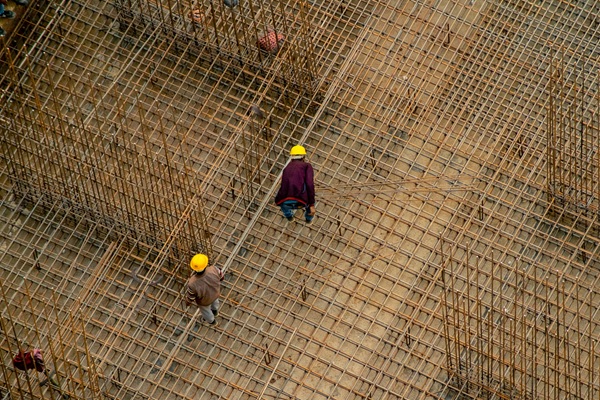.png)

Sujit Kumar is Chief Economist at National Bank for Financing Infrastructure and Development.
September 29, 2025 at 4:11 AM IST
India’s future will be written in concrete, steel and fibre-optic cable. The country has set itself the audacious target of becoming a developed economy by 2047, and the one thing that will make or break that dream is infrastructure. Roads, railways, ports, power stations, airports, and digital highways are not side projects. They are the foundations. Without them, the promise of Viksit Bharat will remain just that — a promise.
The state has already put its money where its vision lies. Capital outlay has grown from ₹2 trillion in 2014-15 to a budgeted ₹11.2 trillion in 2025-26, about 3.1% of GDP. States also undertook cumulative capex of ₹8.4 trillion in 2024-25, mirroring the Centre’s intent. The impact is visible in the real economy. Logistics costs that once drained 13–14% of GDP have fallen to around 8%.
The scale of change is clear. India’s national highways now stretch over 146,000 km, 60% more than a decade ago, and the pace of construction has more than doubled. The railways are being reimagined with freight corridors and high-speed trains. The skies are opening up: aviation is on track to carry 700 million passengers by 2030. Ports, preparing for 4,786 million metric tonnes of cargo by 2047, are racing to expand capacity.
The energy story is even more striking. Renewables, already at 46% of generation in March 2025, are projected to rise to 71% by 2047. But meeting demand for 5,500 billion units will mean staggering investment in everything from solar farms to transmission lines. Telecom and the digital economy are equally hungry — 5G rollouts, spectrum auctions, data centres. By 2030, the digital economy is expected to triple, fuelling further capital need.
Cities too are transforming. The Smart Cities Mission has seen ₹1.51 trillion invested, with 93% of projects completed. The metro map has exploded from 248 km in 2014 to more than 1,000 km today, moving 11.2 million riders daily. Under PM Awas Yojana-Urban, 11.6 million homes have been sanctioned and nearly 9.3 million already built. Yet let us be clear — most of the infrastructure that India’s urban population will require by 2047 has yet to be built.
Financing Squeeze
The state will still carry the lion’s share of this load, but it cannot do it alone. Fiscal space is limited. The truth is simple: private capital must step in.
Snapshot of Infrastructure Investment Requirement (FY2026-FY2047)
|
Sector |
Cumulative Requirement FY2026-FY2030 (₹ trillion) |
Cumulative Requirement FY2026-FY2047(₹ trillion) |
|
Road (NH + States) |
~18 |
83-91 |
|
Rail |
~14 |
75-77 |
|
Port |
~1 |
~6 |
|
Airports |
~1 |
7-7.5 |
|
Power |
~22 |
143-154 |
|
Telecom (incl. data centres) |
~6 |
30-31 |
|
Urban Infra (excl. housing) |
~68 |
310-375 |
|
Irrigation (incl. river linking) |
~6 |
27-30 |
|
Total (Key Segments) |
~136 |
680-770 |
Source: National Bank for Financing Infrastructure and Development and ICRA Research
Once, banks were the bedrock of infrastructure finance. Not anymore. As of June 2025, infrastructure credit stood at ₹33.3 trillion, with banks accounting for ₹13.9 trillion — just 42%, down from 50% in 2020. Non-banking infrastructure finance companies have filled the void, their books expanding at 12% annually, now making up 58% of infrastructure credit. Their loan books grew at a 12% CAGR from 2020 to 2025, supported by improved asset quality, better provisioning, and prudent project selection. Backed by sovereign support, they can issue long-term bonds and tap global markets in ways banks cannot.
Newer instruments are also doing heavy lifting. Infrastructure Investment Trusts have mobilised more than ₹7 trillion. The creation of the National Bank for Financing Infrastructure and Development is another key step in broadening the financial base. Defaults in the sector have fallen sharply — from 1.3% in 2021-2024 to 0.3% in 2024-2025 — giving comfort to investors that these assets are no longer the high-risk gamble they once were.
Source: National Bank for Financing Infrastructure and Development and ICRA Research
Trend in default rate among infrastructure companies
Source: National Bank for Financing Infrastructure and Development and CRISIL Intelligence
Yet the real untapped pool is domestic. Life insurers, pension funds, provident funds — together holding more than ₹117 trillion in assets — remain wedded to government securities. Ninety-four percent of life insurers’ debt investments are still in AAA paper. Barely 7% of corporate bonds issued in the past five years has gone into infrastructure. Mechanisms such as Partial Credit Enhancement, which raise issuer ratings through first-loss guarantees, could change that risk calculation. If India can unlock this patient capital, it would have a financing pool almost as deep as the banking system itself.
Stubborn Hurdles
Of course, money alone will not build roads and ports. Land acquisition and endless disputes continue to delay projects. Cost overruns and uncertainty remain the enemy of investor confidence. Global capital is increasingly governed by environmental, social and governance filters, meaning India’s infrastructure will have to be not only bigger, but greener and fairer.
Make no mistake: falling default rates and shiny new highways should not obscure past mistakes. Reckless lending, poorly structured PPPs and politically driven projects have scarred the system before. India must resist repeating those errors. Discipline in execution will matter as much as ambition on paper.
The stakes are immense. What India is attempting is to compress a century of infrastructure building into a single generation. The ₹770 trillion bill is not optional; it is the entry fee for a developed economy.
The wager has been placed. Now comes the test of execution.




